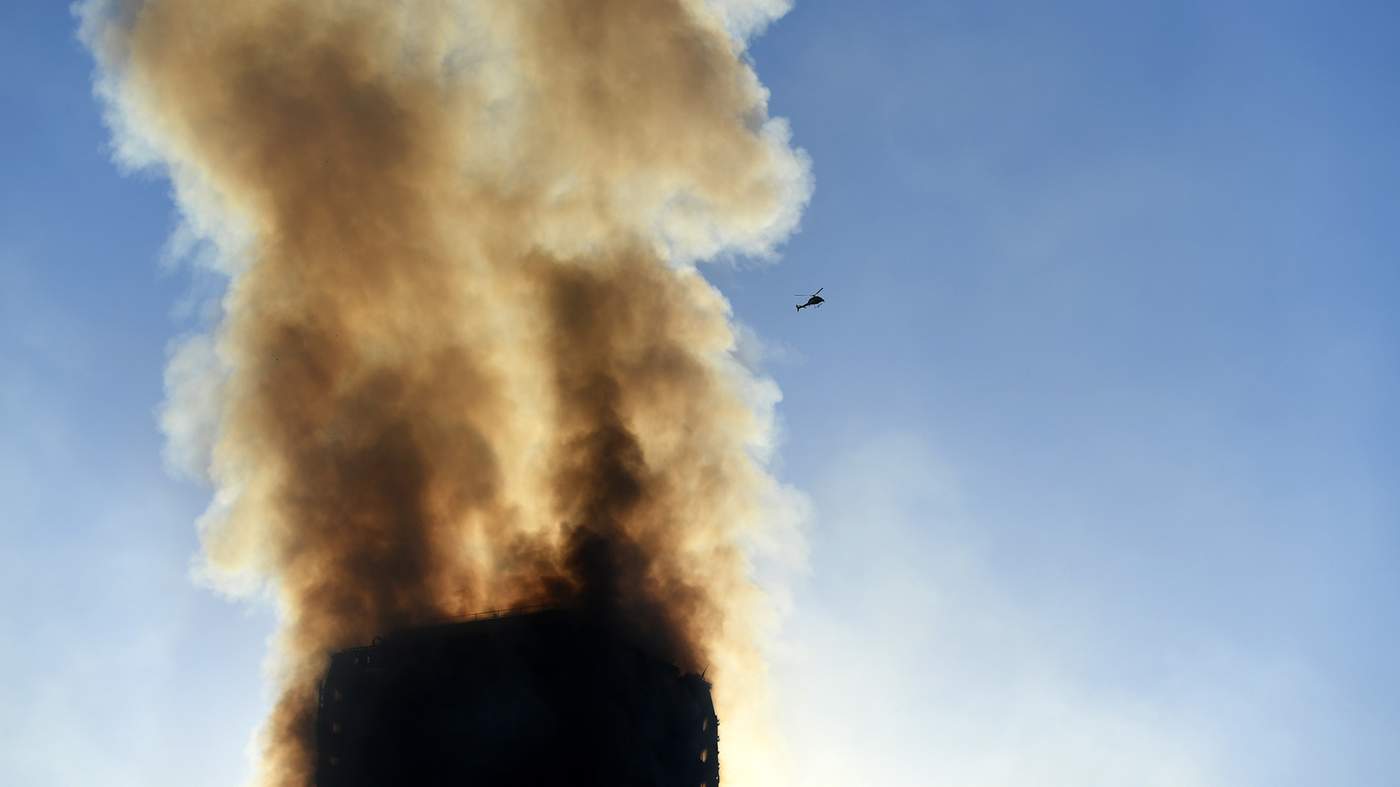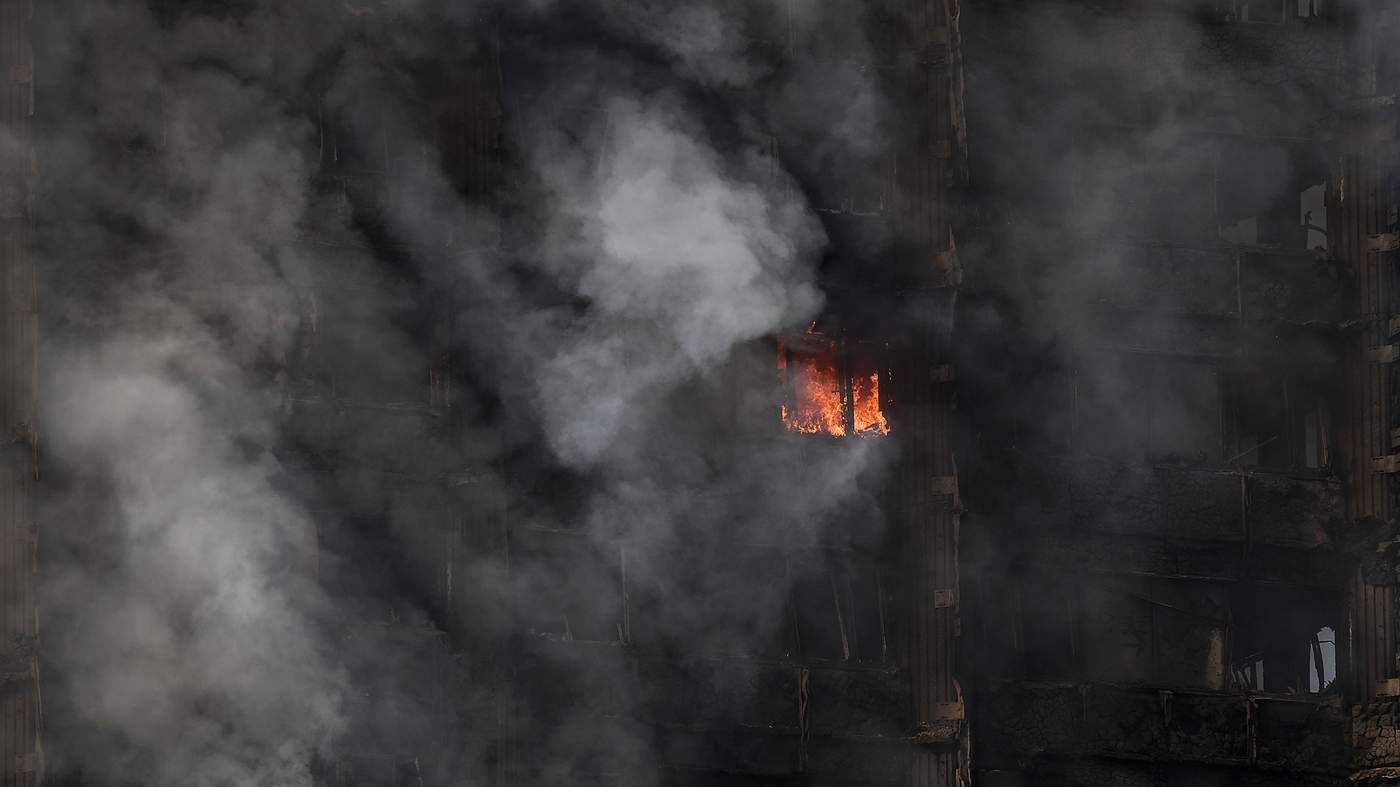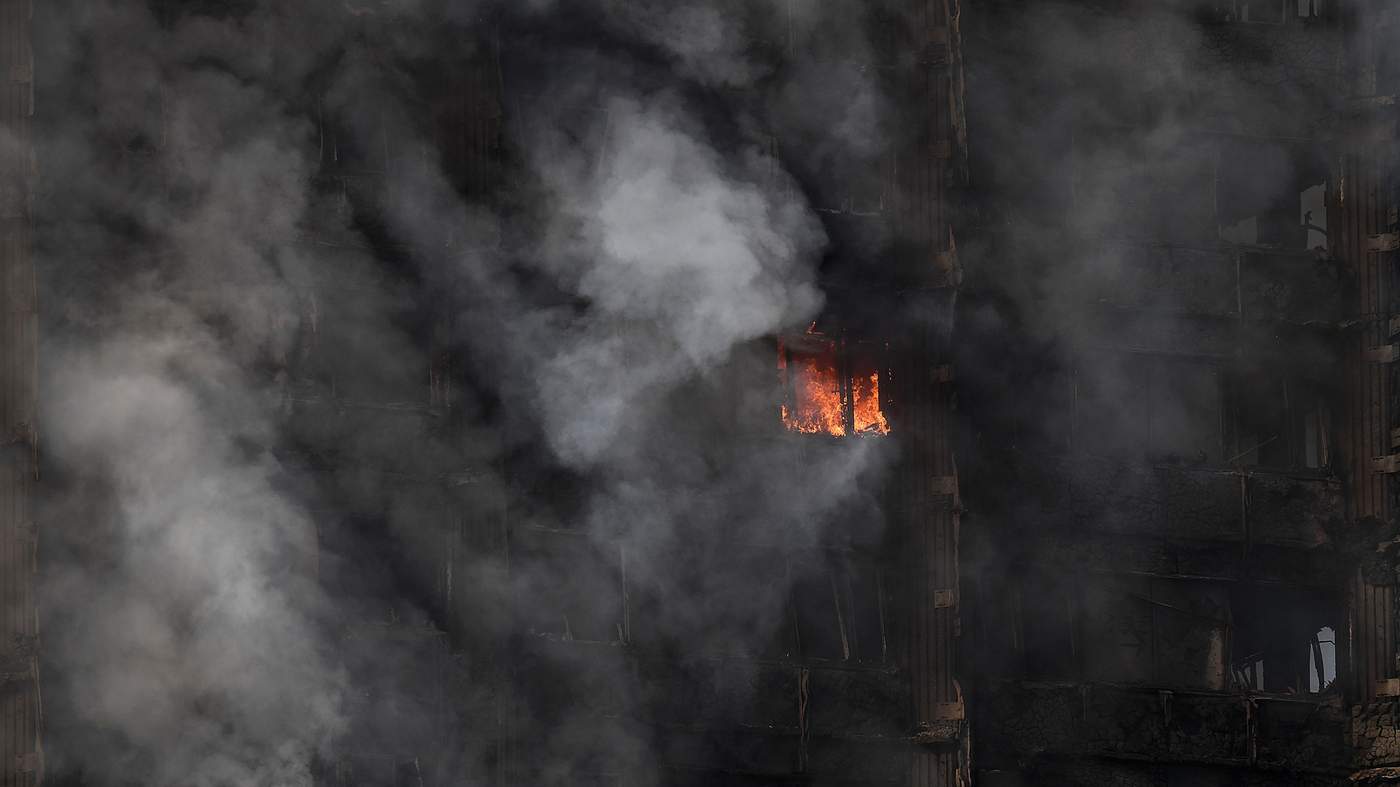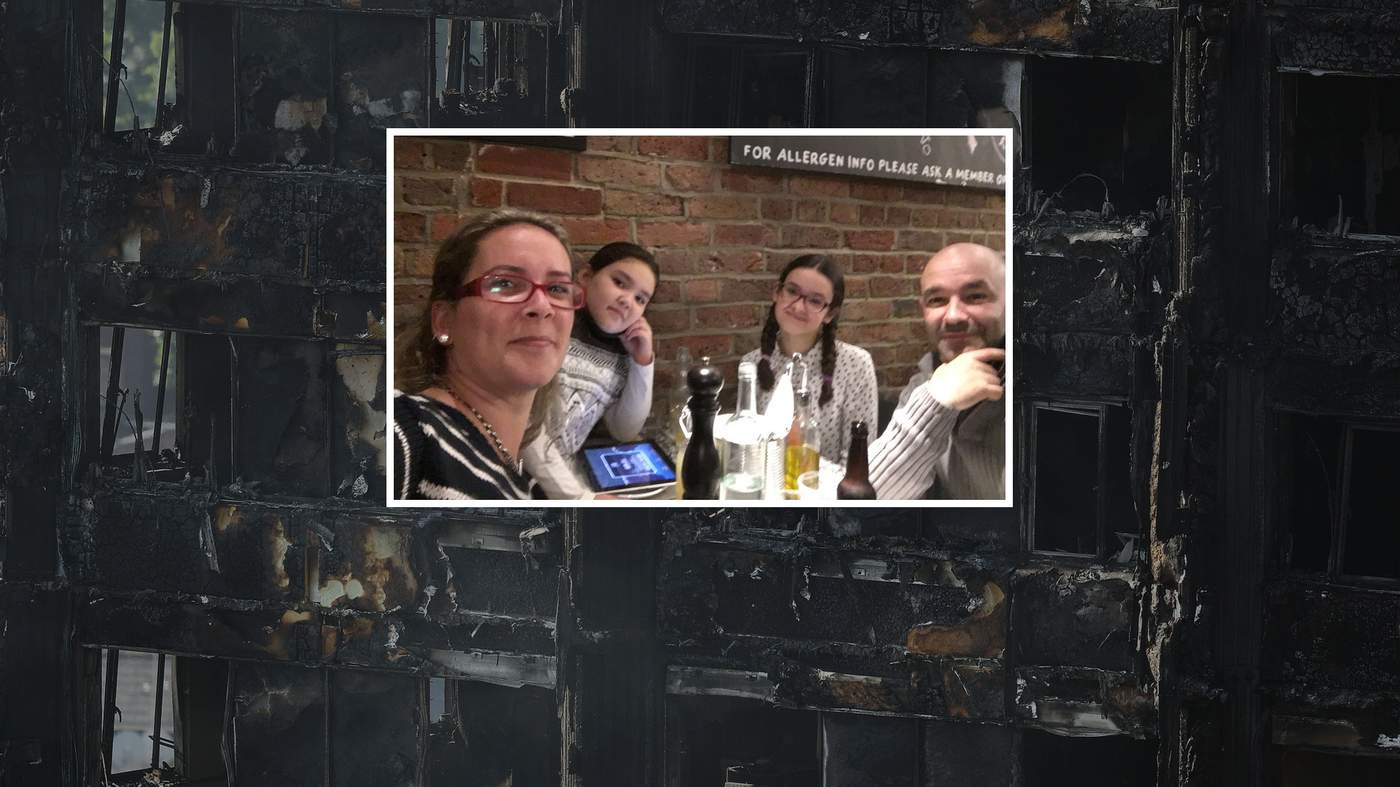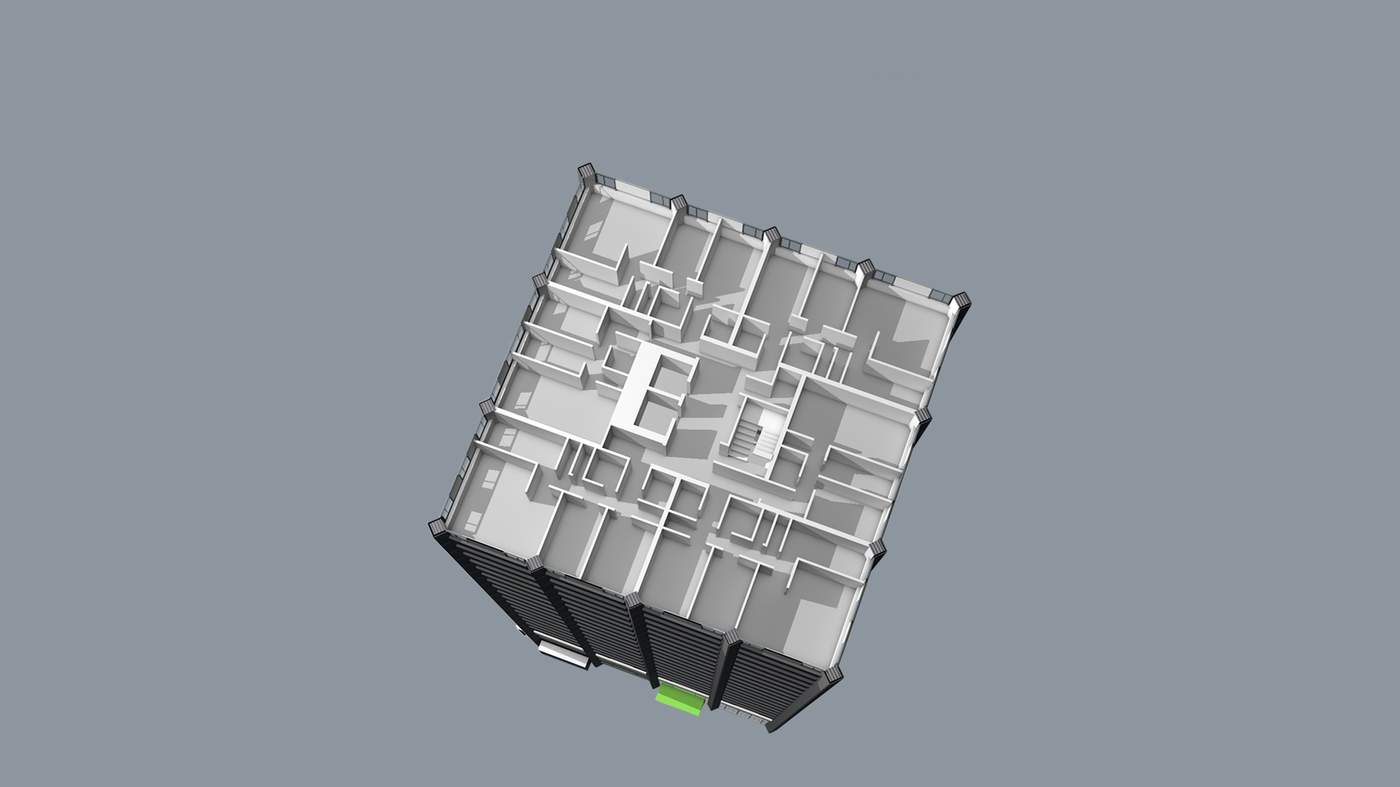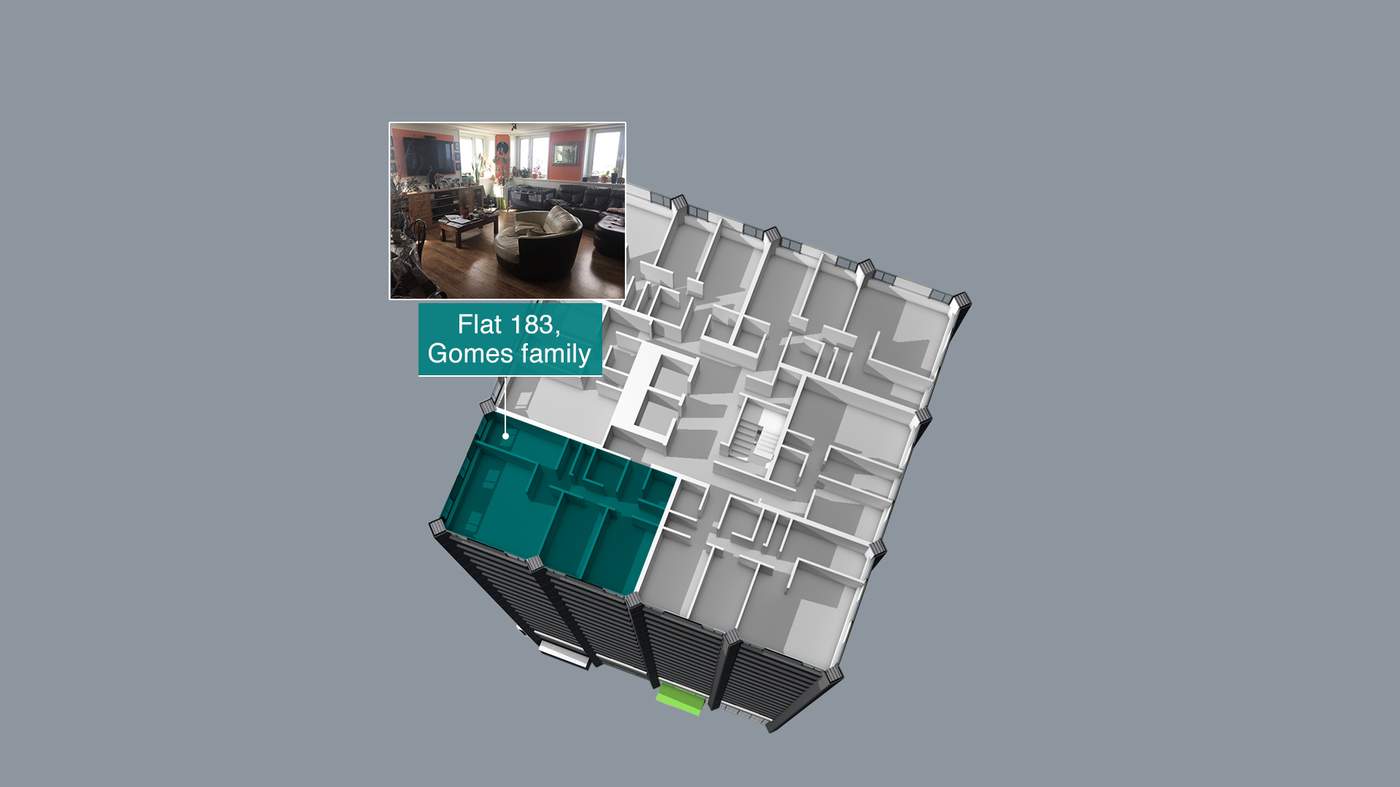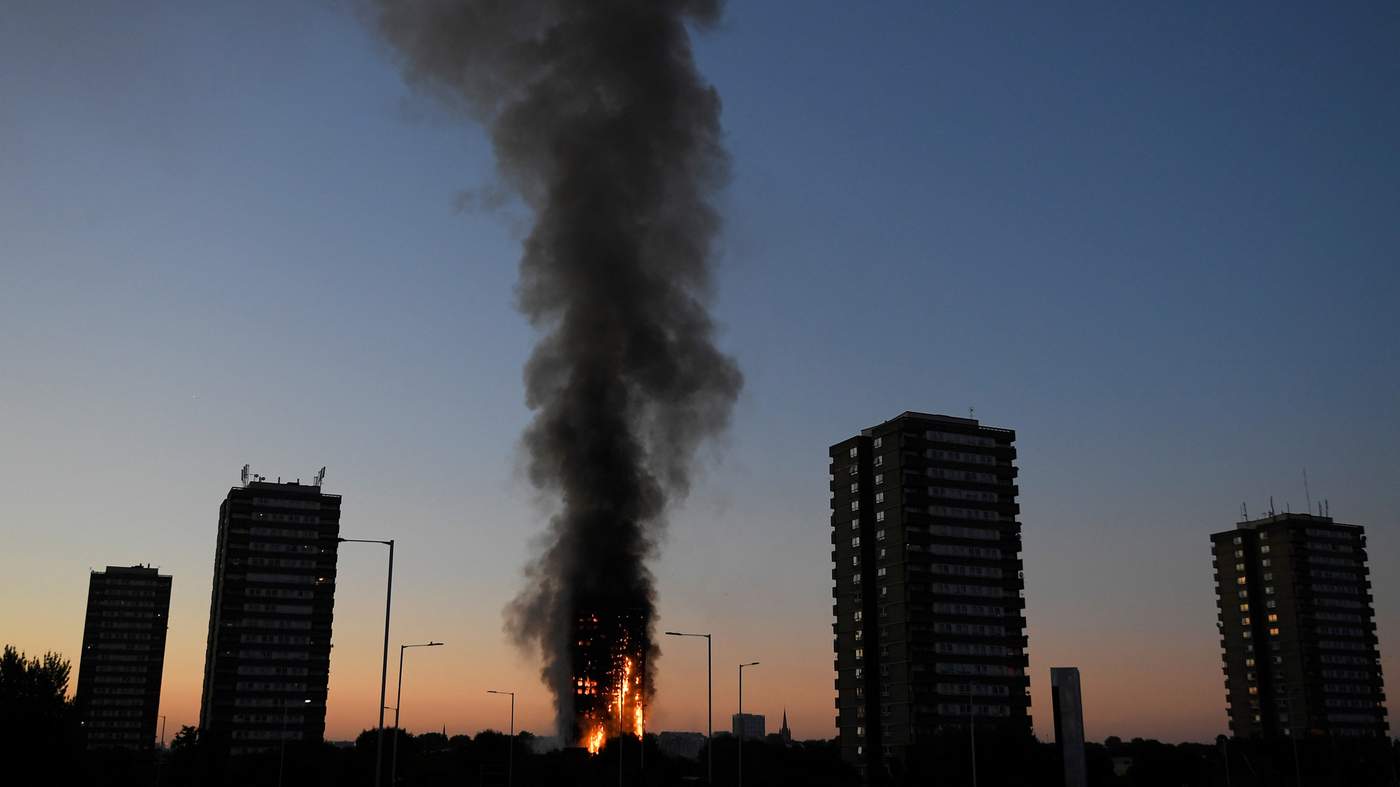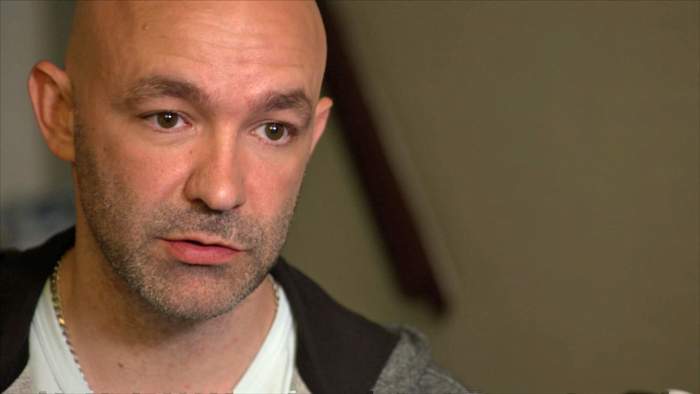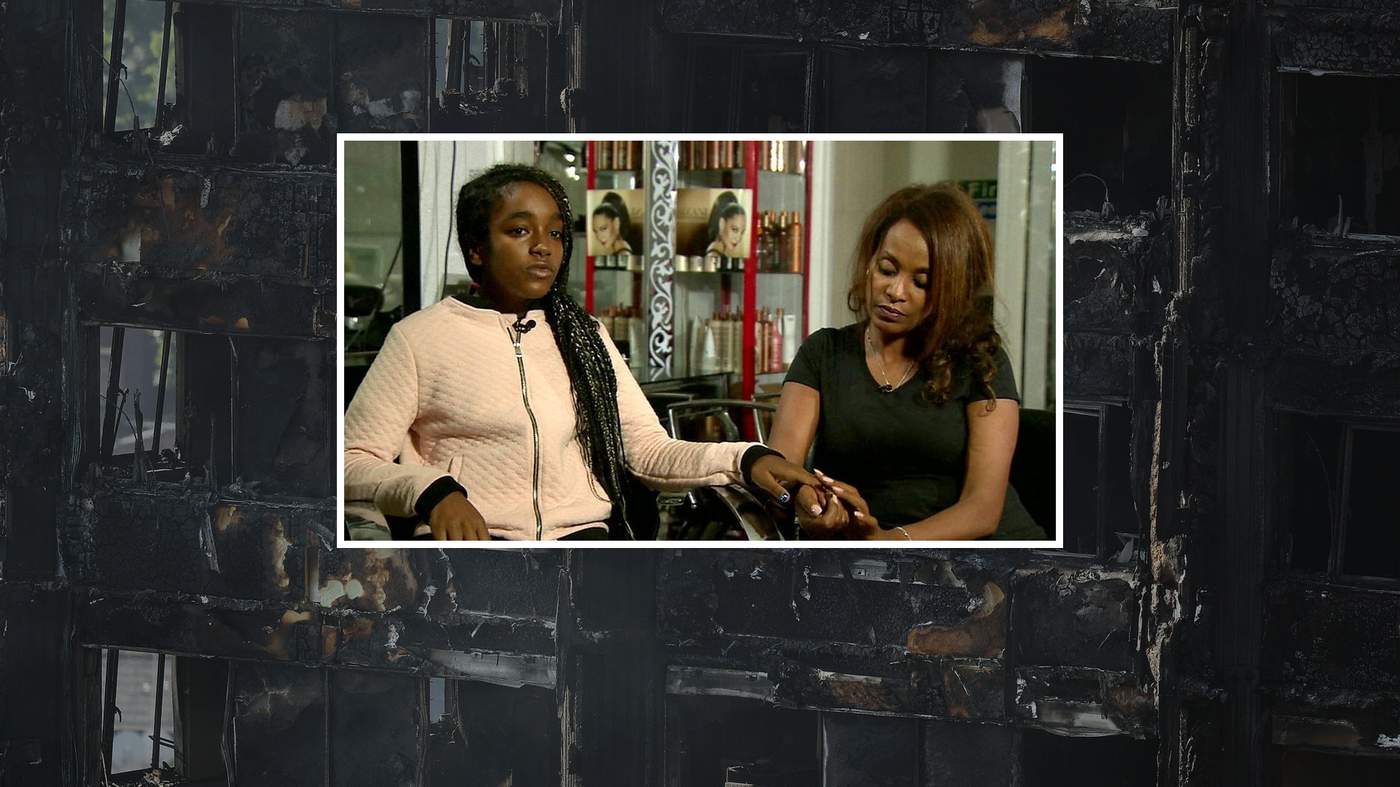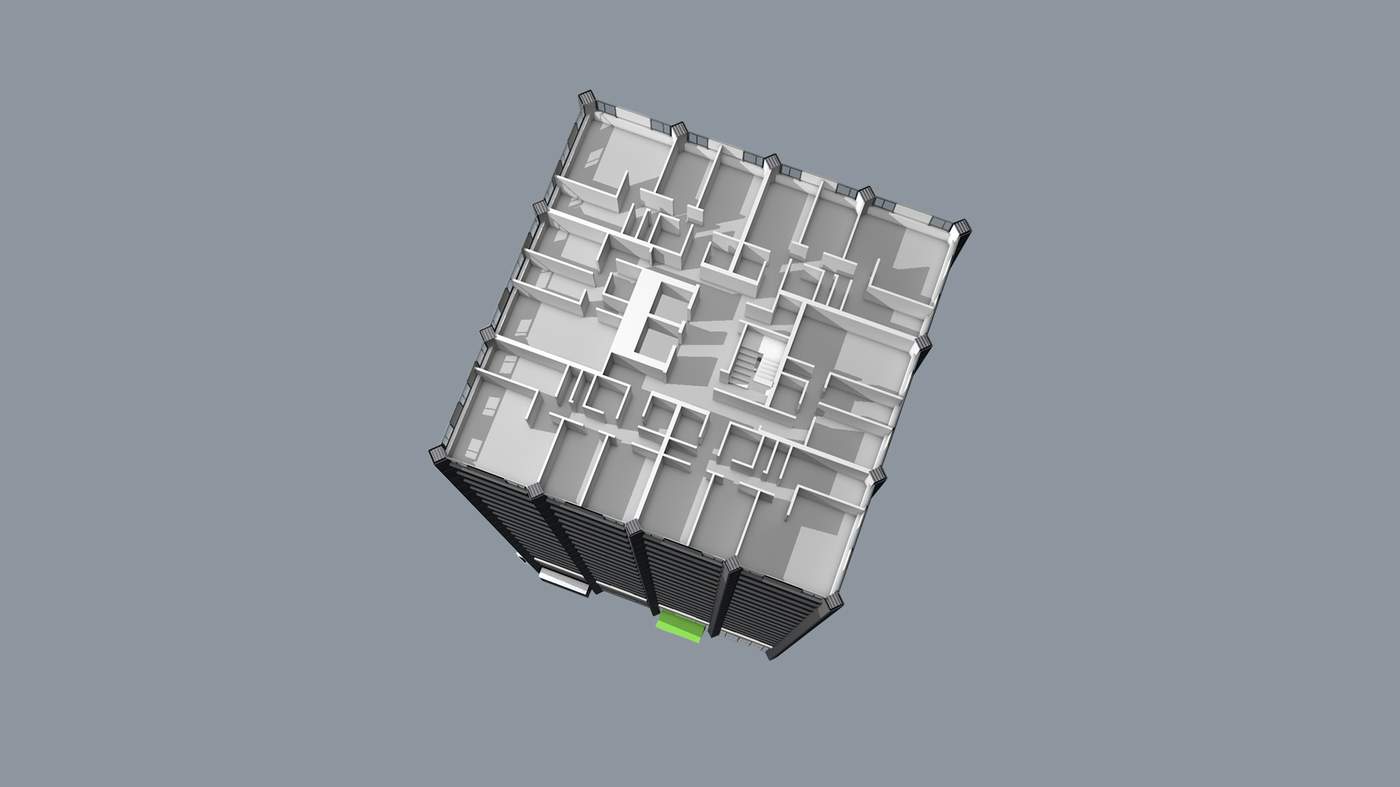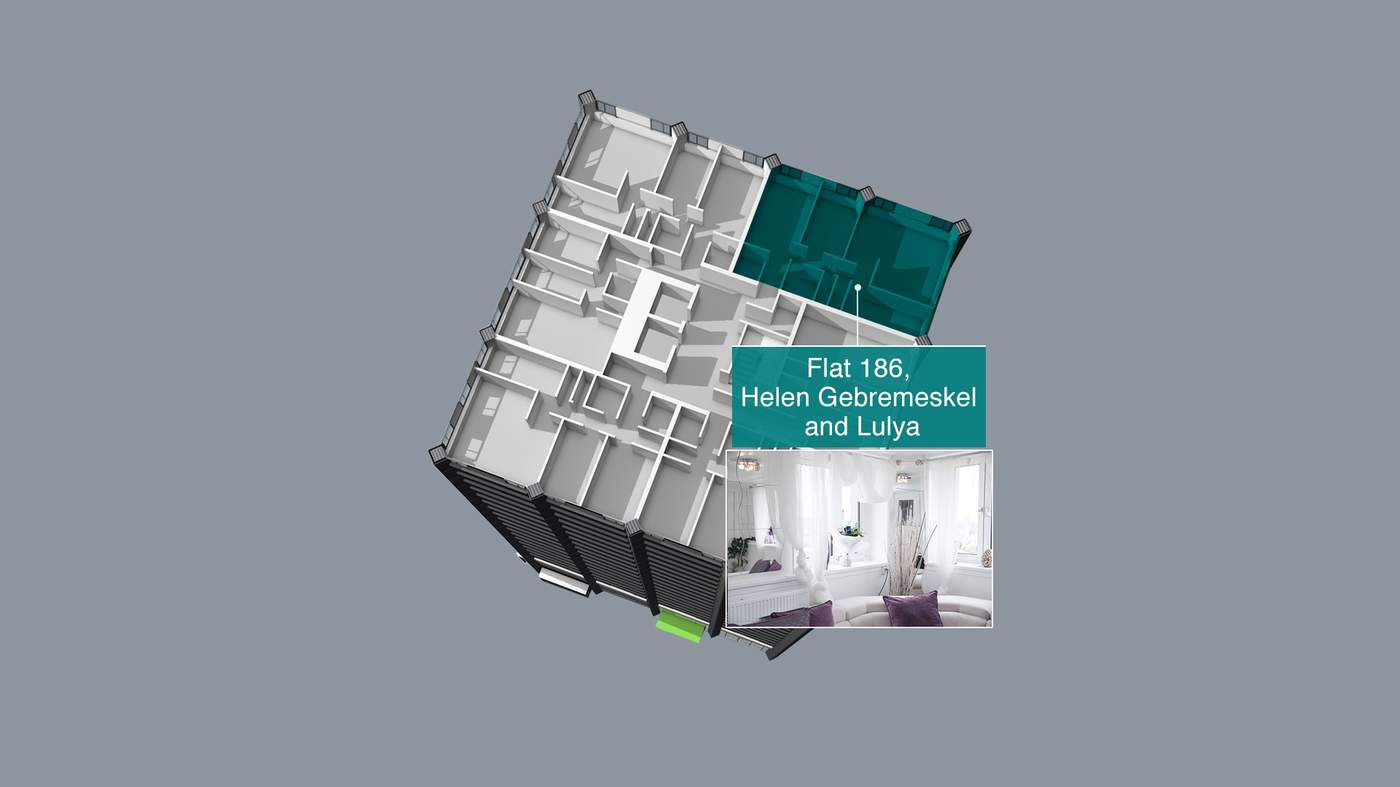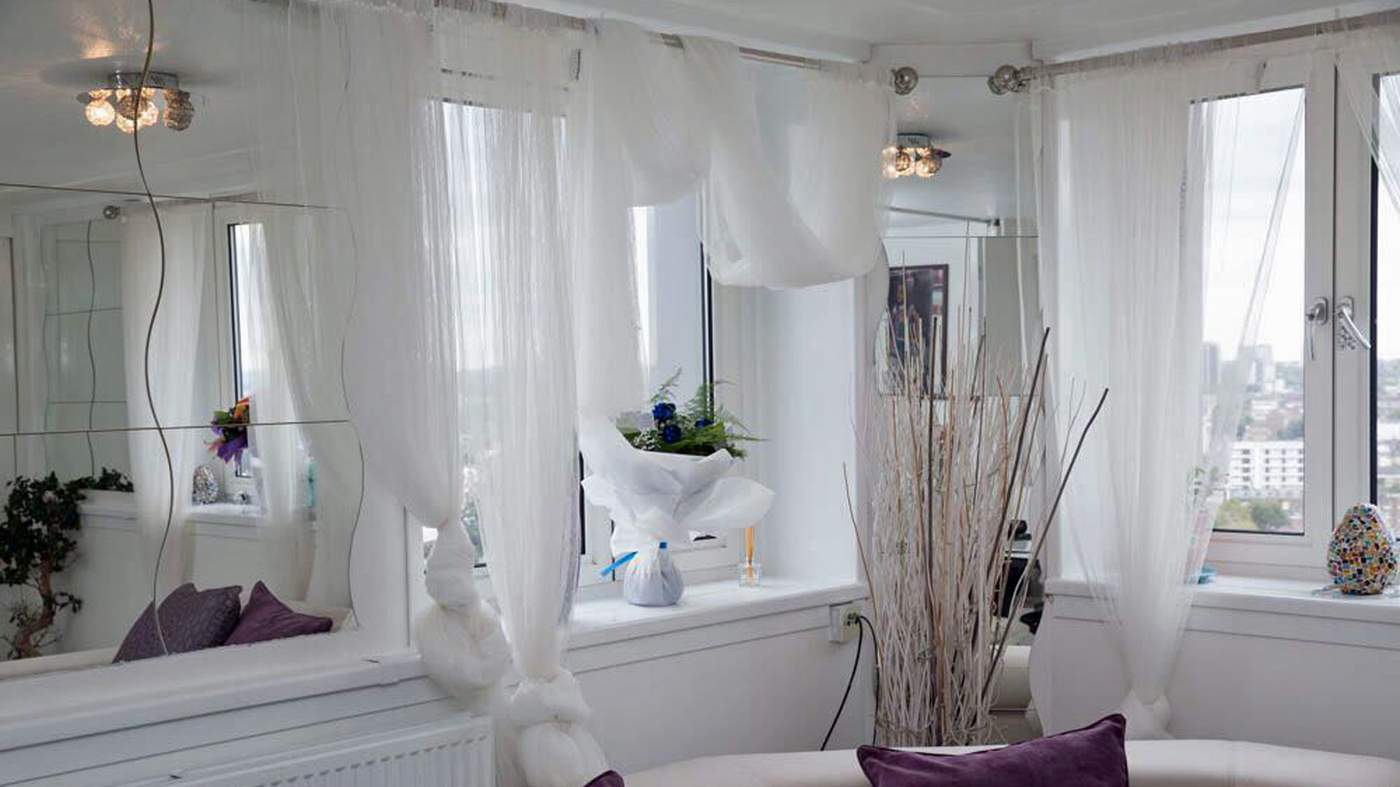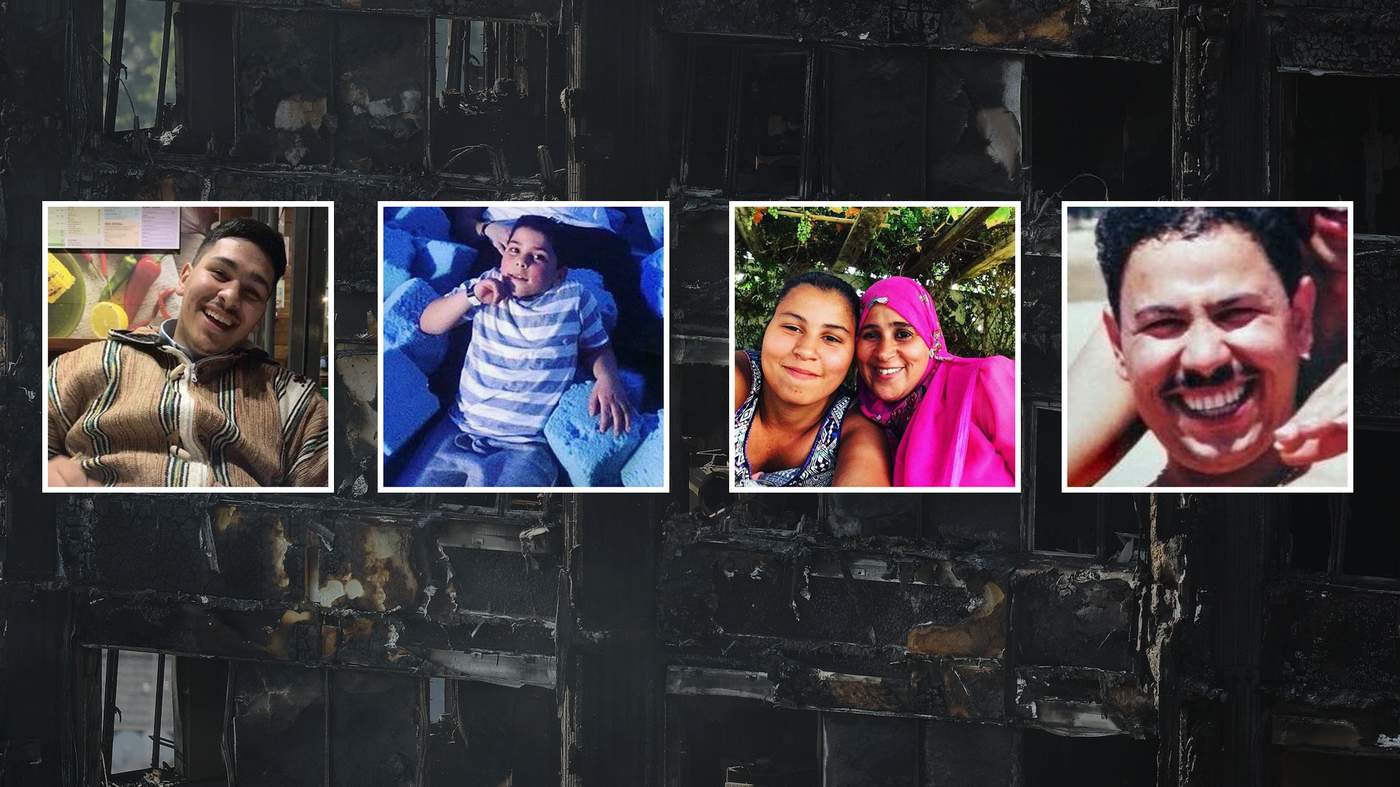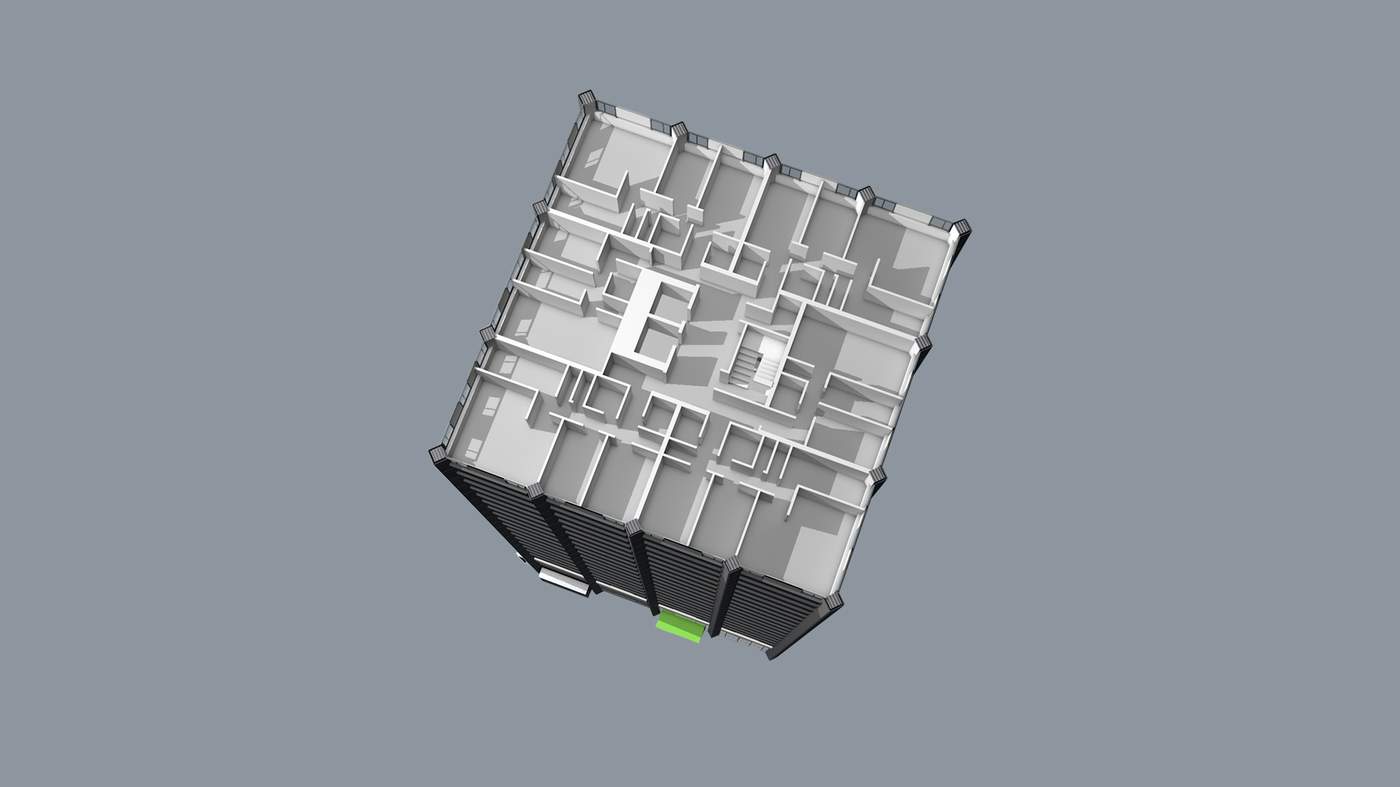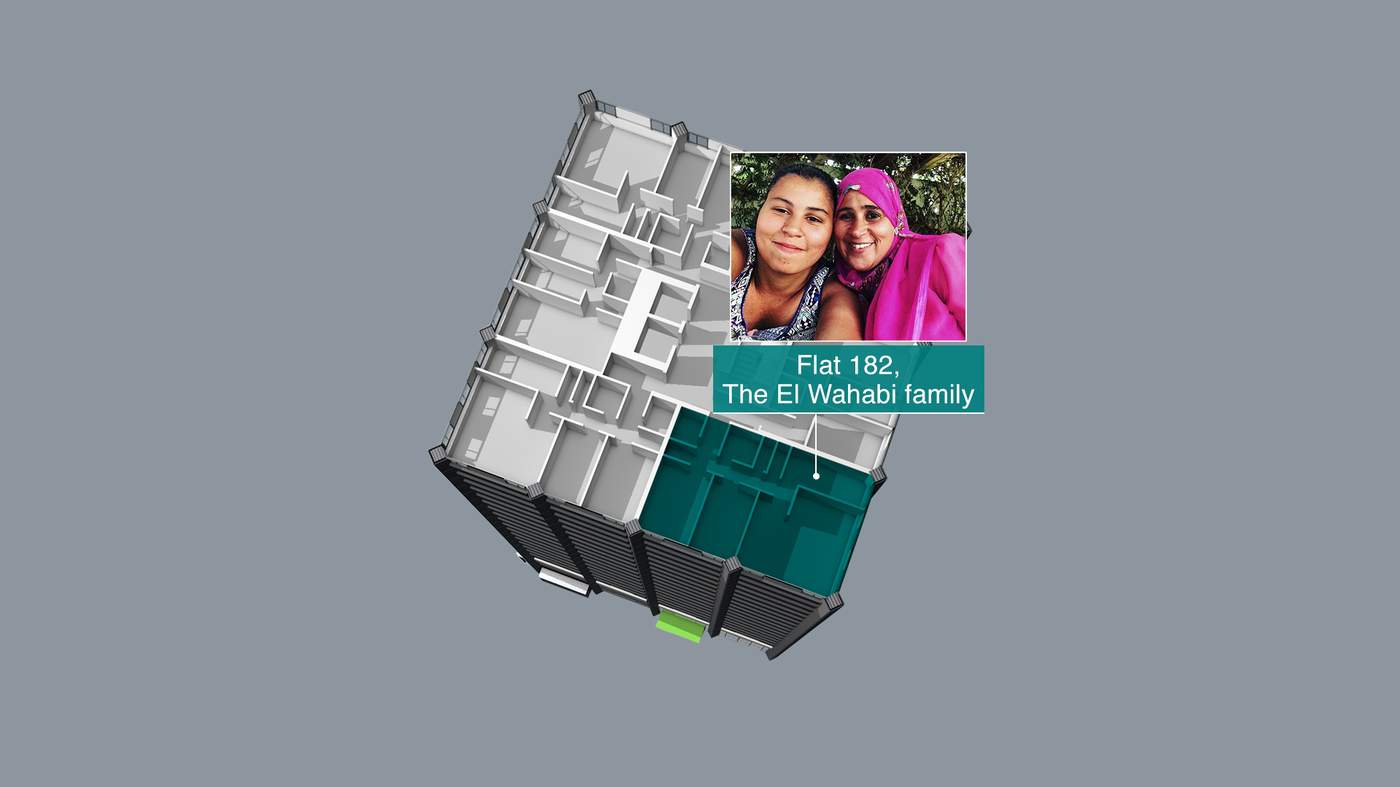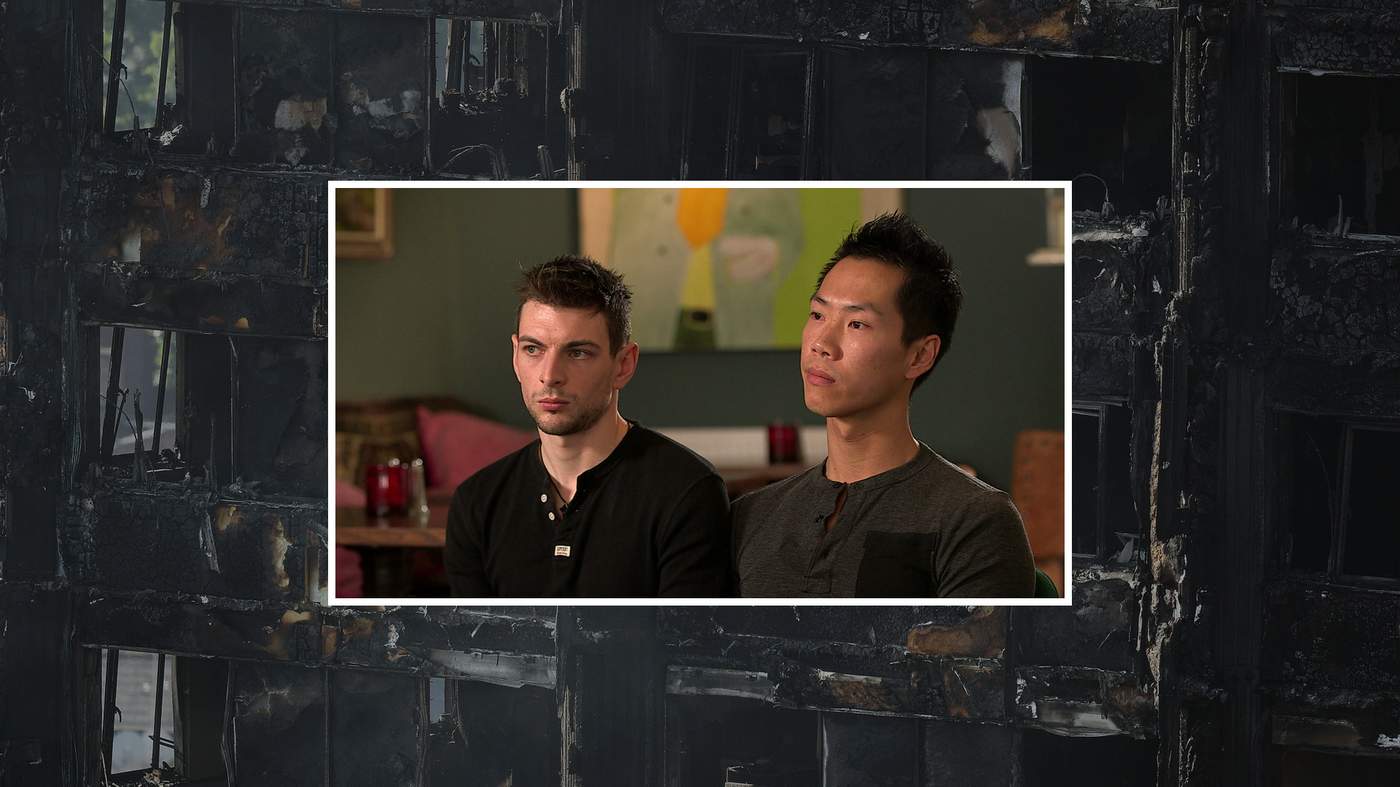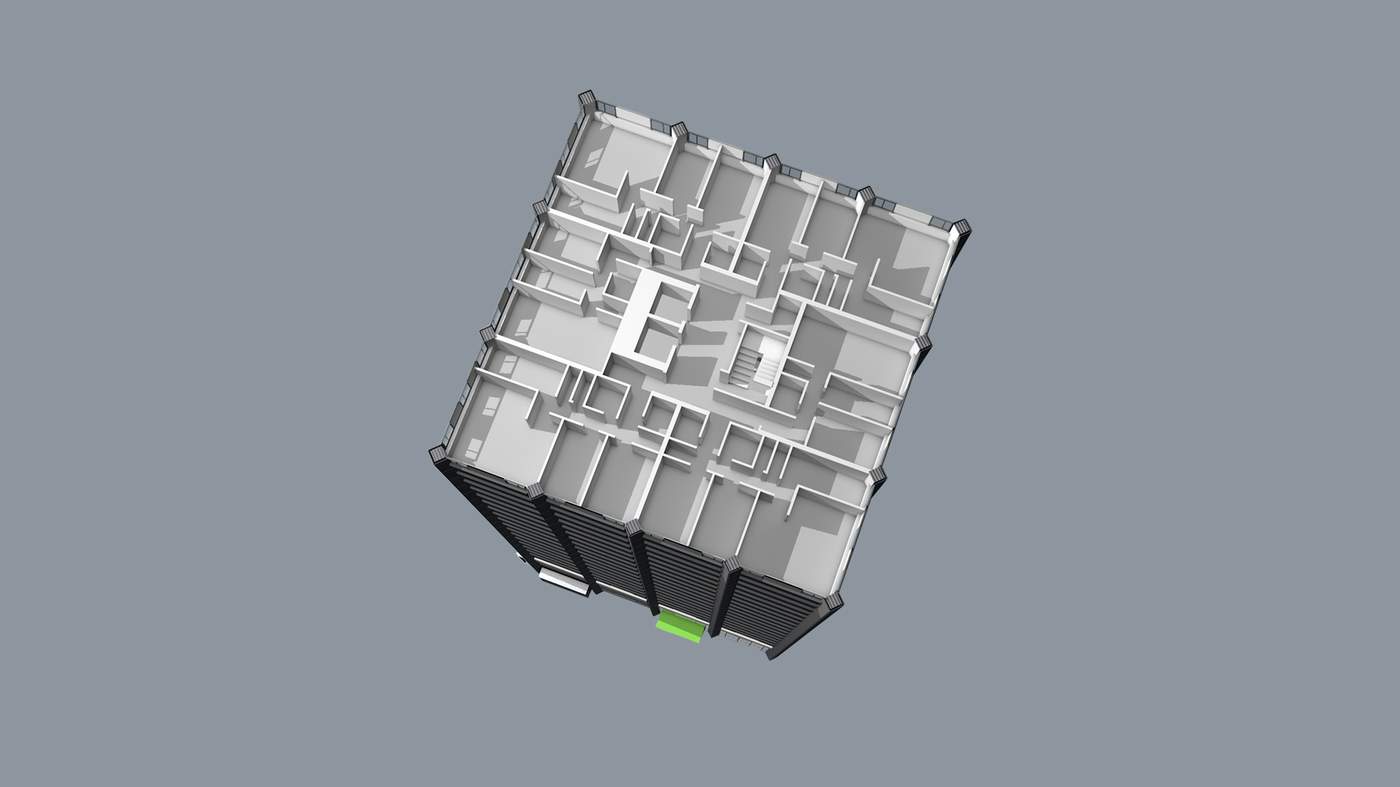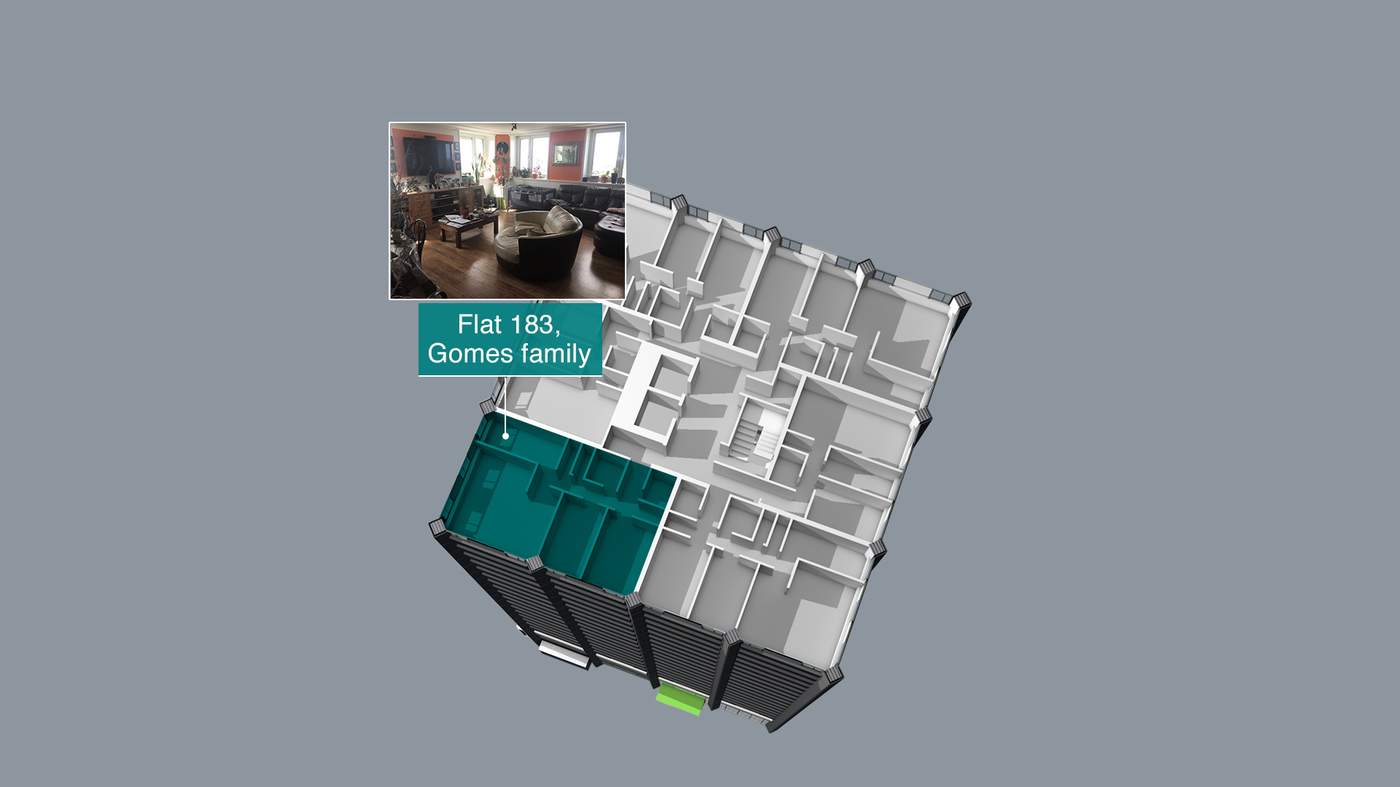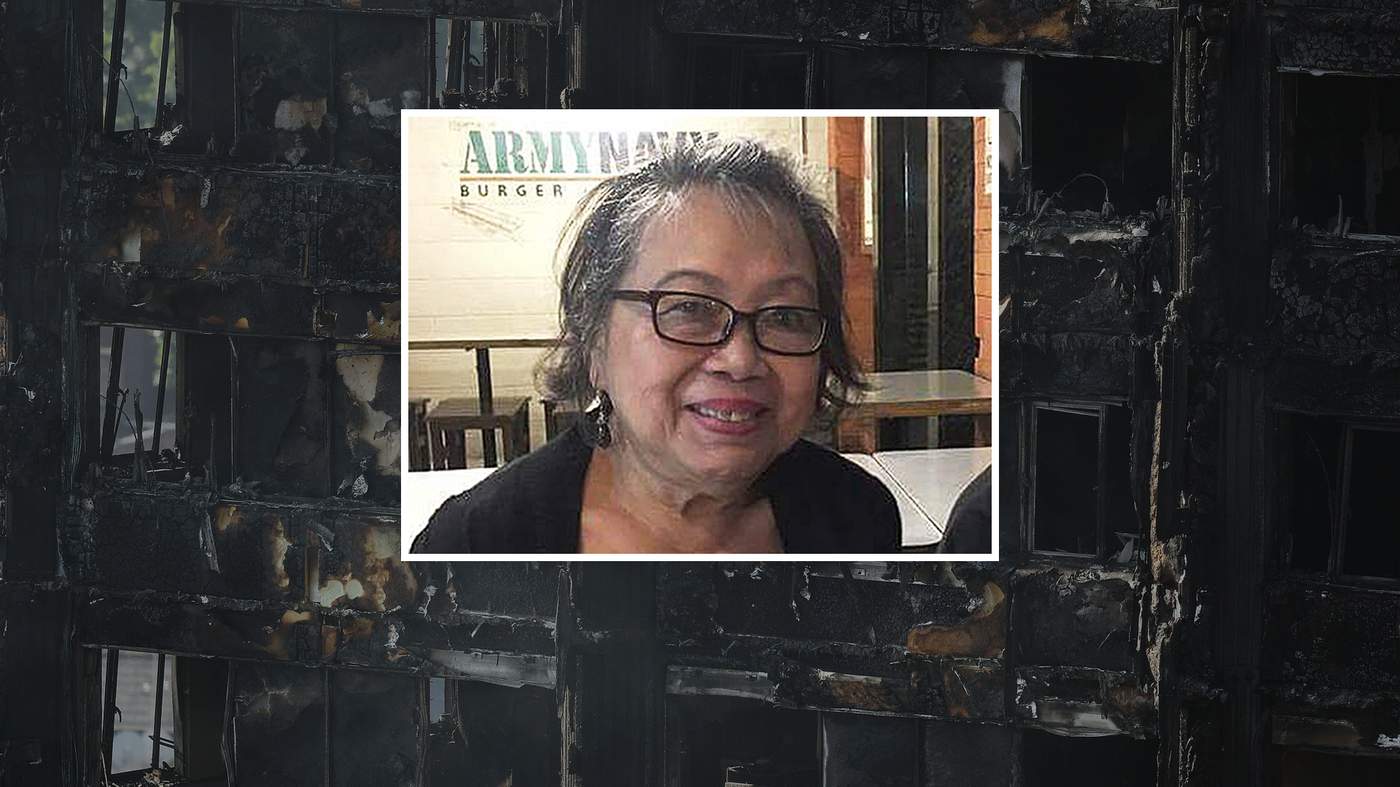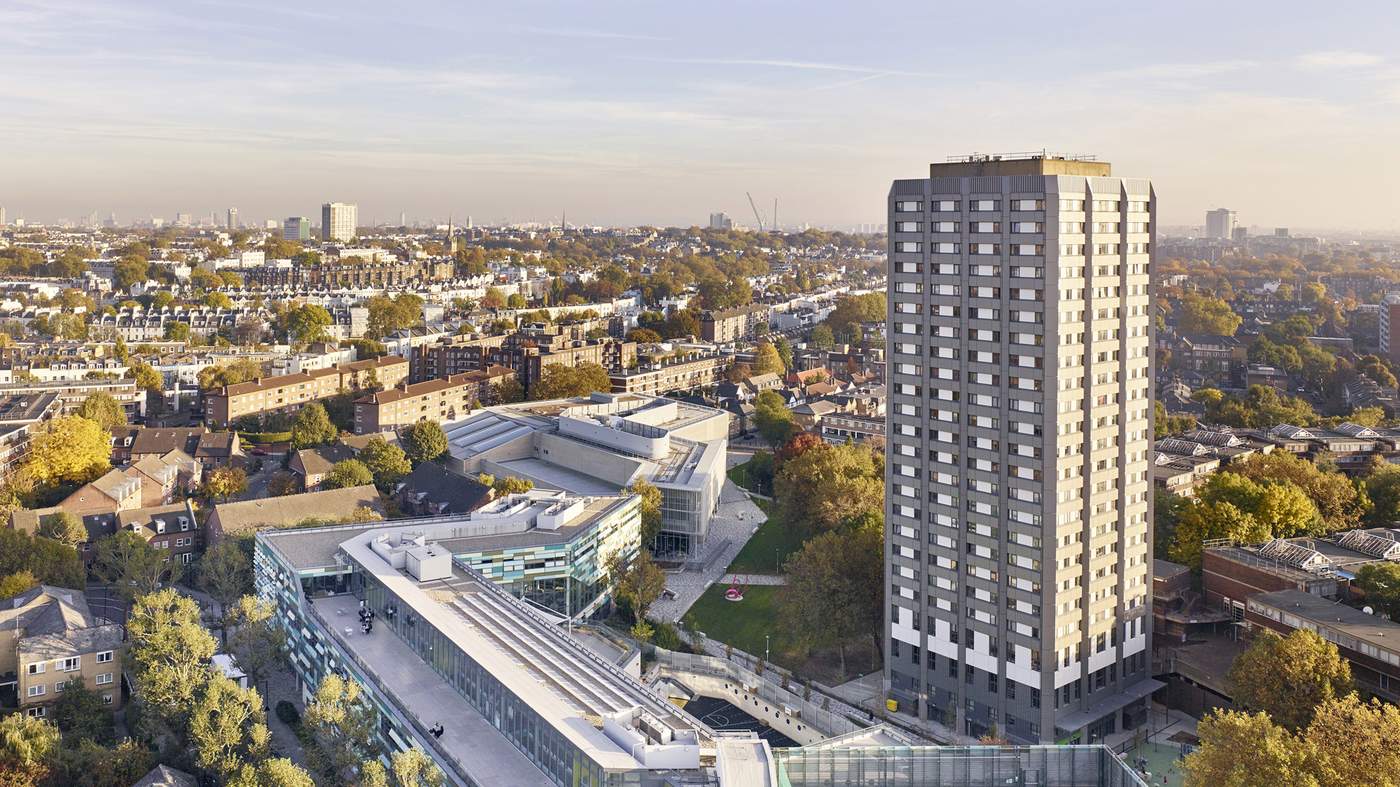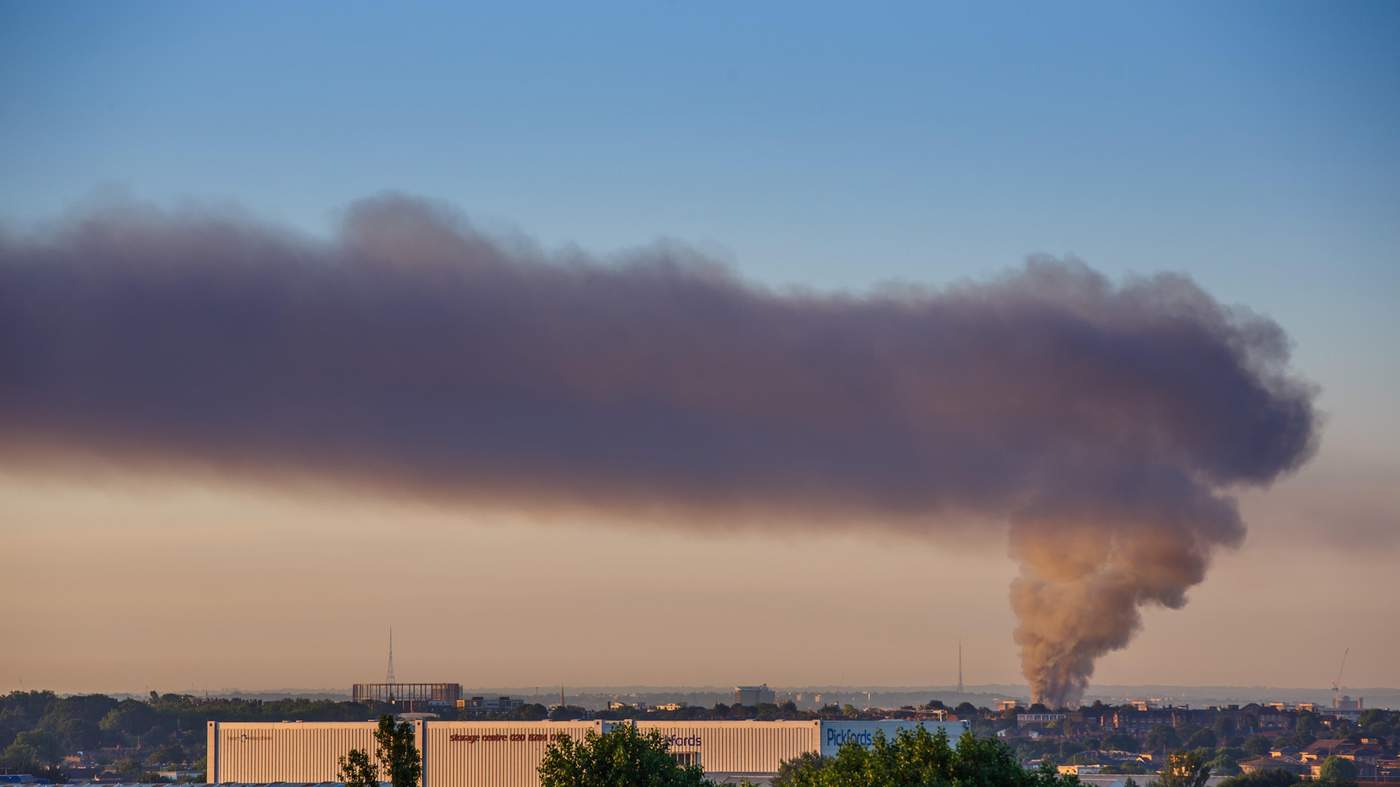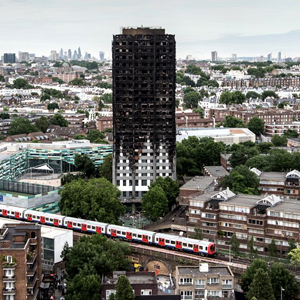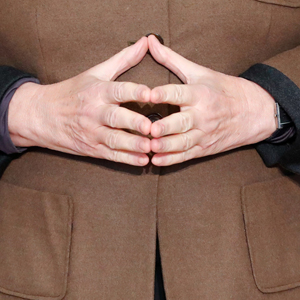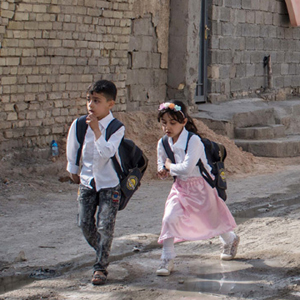Warning: This article contains content that some readers may find distressing
The fire at Grenfell Tower in west London on 14 June killed scores of people and left the block a charred ruin. It stands as a reminder of one of the most tragic days in modern British history.
Each floor of the tower tells a story - about London and its inhabitants, about immigration and gentrification, about lives lived and tragically lost. It was a microcosm of life in the capital.
Like most of Grenfell, the 21st floor housed four two-bedroom flats and two one-bedroom flats arranged around a central hallway, with the lifts on one side and the staircase on the other.
We used to play in the hallways because it was pretty big. We’d play football. And ‘it’. We had a nice little group on that floor”
Helen, Andreia and Megan, who were at the front, managed to get out. But when they turned around, Marcio, Luana and Lulya weren’t behind them. The girls had been overcome by smoke at about the 10th floor and Marcio was desperately trying to find them in the darkness.
"I said, 'I’m here, follow my voice.’ I tried to climb up. She said, ‘I can’t, Dad.’ Then she didn’t talk any more. The smoke was so heavy you couldn’t see. I kept trying to shout, ‘I’m waiting.’”
Marcio saw a light. Two firefighters were on their way upstairs. They rescued the girls and brought them down to safety.
All three children and Andreia Gomes were put into induced comas and treated for cyanide poisoning. Logan, the Gomeses’ son-to-be, was stillborn in hospital. It has been difficult to cope with his death - and the deaths of other close friends and neighbours.
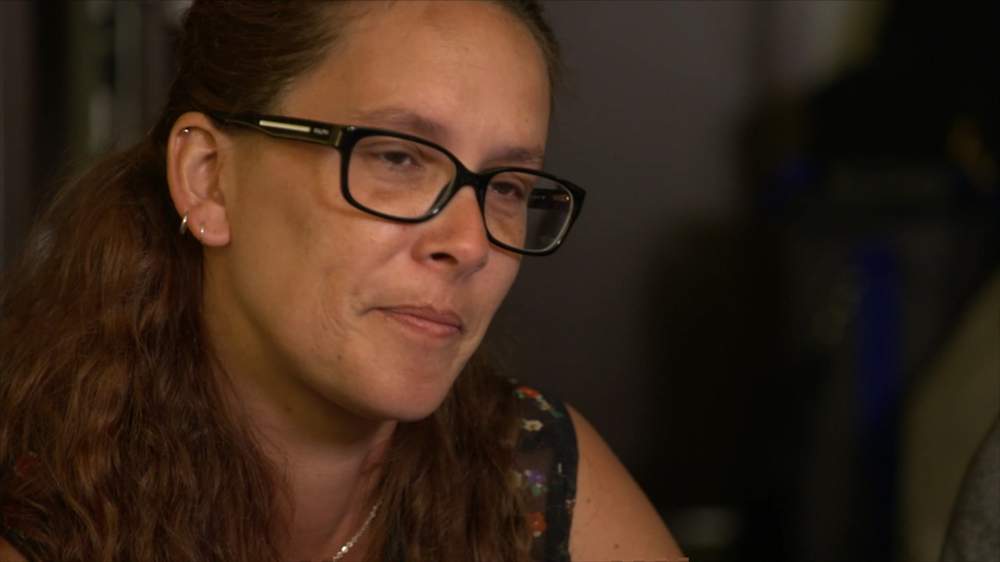
Andreia Gomes
“To me, it’s like yesterday. Sleeping is horrible. It’s good to talk about it. We do that every day,” says Andreia.
Marcio is angry that concerns about safety were ignored by the council and the tenants' management organisation before the fire.
“Yes, it was an accident, but it could have been avoided. The residents never wanted cladding, we wanted sprinklers. We said to them many times it didn’t feel safe after the regeneration work they spent three years doing. They kept saying, ‘Be quiet, it’s fine.’”
But Marcio and Andreia are clear they don’t blame the firefighters for any of what happened. And they are intensely grateful to the two who picked their way through the darkness to rescue Luana and Lulya.
The London Fire Brigade rescued 65 people during the fire. Due to ongoing investigations and the public inquiry, it says it cannot go into details of what happened on the night.
Now the Gomes family home is just ash. Detectives showed them a 360-degree view of the flat. “It’s pretty much all gone. The only thing that remained was the metal frames of the beds,” says Marcio. “There’s a huge crack in the floor. The fire must have been so intense in that area. It was difficult for me and my wife to see, but it was important, to close that chapter in the book.”
Both the dogs that the Gomeses and Gebremeskels tried to rescue died - after the girls passed out, both dogs ran back to their flats.
As for the material possessions they have lost, though everything is gone, it’s the sentimental things “you can’t put a price on” that are missed.
“The first thing I thought of was the nursery books my daughters had done, and pictures of course,” says Andreia. “I had photos of my mum who passed away. The negatives were there, but we lost them as well.”
Three months on from the fire, the family are still living in a hotel. They’ve only been shown one potential new flat in all that time and the strain is beginning to show.
Marcio believes they can rebuild their lives.
“We have to for the sake of the girls,” says Andreia.
But they are haunted by what happened and by the fine line between death and survival.
“I am not sleeping too well at the moment and that’s because all those things keep running through my head,” says Marcio.
But his actions on the night were key to their escape. He was calm and organised, filling the bath, wetting towels, giving clear instructions to the others about how they might make it out of the building. Six of the seven people who escaped from the 21st floor that night did so under his guidance.
Born in Ethiopia, Helen Gebremeskel, 45, came to the UK as a political asylum seeker when she was a child. She moved into Grenfell Tower 20 years ago.
For 17 years she lived in a one-bedroom council flat and then in 2014 she moved down a floor, to the two-bed council flat on the 21st floor she shared with her daughter Lulya – Flat 186.
“It was a very special building, Grenfell Tower, very special,” says Helen.
Lulya misses the flat. “Like when I walk through, I open the door and I hear my dog bark. And then I miss my friends that I would play with.”
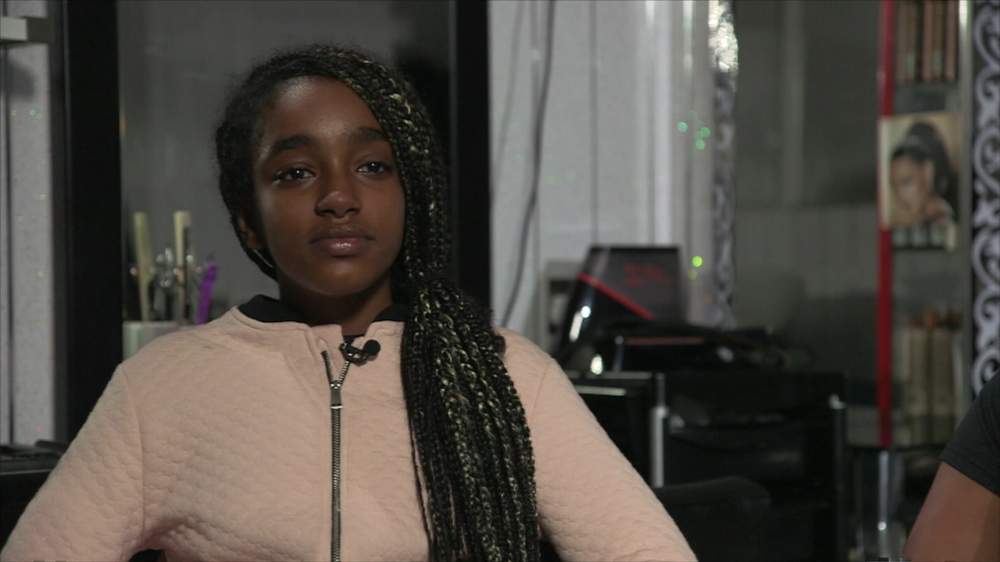
Lulya: “I miss my friends”
Helen’s flat was painstakingly decorated - a haven of white with a few splashes of purple in the form of cushions and carpet. She was proud of the home she’d created with its corner sofa in the living room, its large television and its designed feel.
“It was very nice. Whoever comes in that house is shocked. It was a beautiful house. The living room was very big. And the kitchen, it’s very big. I have never seen a council flat that big.”
Off the entrance corridor, Helen had created a prayer room - a quiet place for someone with a hectic working life.
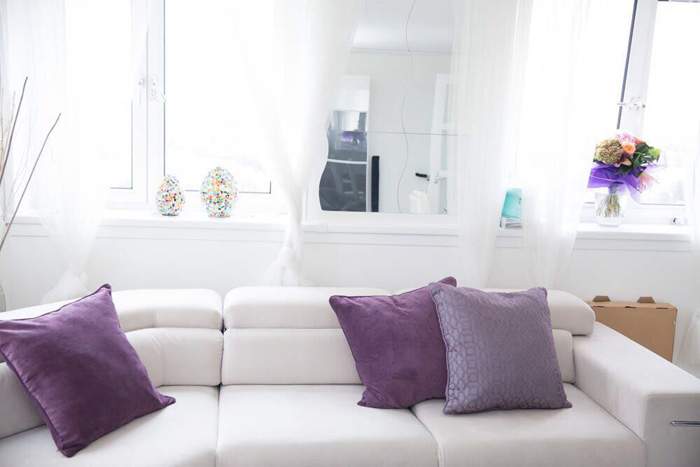
Every day Helen went to the beauty salon she ran in west London.
“I’m always working, I always go home late. The only day I have a day off is Sunday which is to spend time with my daughter.”
Helen was always close to her neighbours, the Gomes family. Lulya often spent time with their daughters.
The night of the fire began like many other evenings for the family in Grenfell. Lulya had a shower and watched a movie while Helen cooked their dinner. They ate together and then went to bed. But Helen was woken just before 01:30 by her fire alarm and immediately smelled smoke. When she looked out of her kitchen window, she could see the fire. She woke Lulya, who grabbed their dog, and they tried to go down the staircase. That attempt failed but ultimately they were to be successful.
Helen talks wistfully of the community she’s lost.
“It’s my home. I know a lot of the people there, my neighbours, and everyone there. When you live somewhere for 20 years, it’s your home. It’s very difficult for us.”
As well as her neighbours on the 21st floor, her best friends in the tower were the Choucair family - Nadia Choucair, her husband Bassem and their three children, Mierna, 13, Fatima, 11, and Zainab who was three. They lived on the 22nd floor and were her neighbours for 17 years.
Helen spoke to them a lot on the night of the fire as they sheltered in their flat one floor up.
“The last time I called them and I say to them, ‘You need to get out, you need to get out. No-one’s coming to rescue us, you need to get out.’ I explained to them, ‘Just cover them with a wet towel, just wet it and just get out.’ I wouldn’t have done it if it wasn’t for Marcio. Her husband Bassem was crying. He was crying and that was the last time I spoke to them.”
Helen is devastated by their loss.
“It’s very emotional, thinking you’ve got friends there who support you, is always there with you, you know. And then, all of a sudden, they’re not there.”
Flat 182 was the home of NHS worker Abdulaziz El Wahabi, 52, and charity volunteer Faouzia El Wahabi, 42. They lived with their children Yasin, 20, Nur Huda, 15, and Mehdi, eight.
Abdulaziz worked long hours as a hospital porter. He was dedicated, with a great sense of fun, says his brother-in-law Chris Jones. “You have to have a sense of humour to work in the NHS. He never complained, he got on with the job. Being a porter, you’re someone who goes to the operating theatre, to X-rays. It’s a very important job - you just don’t get well paid for it.”
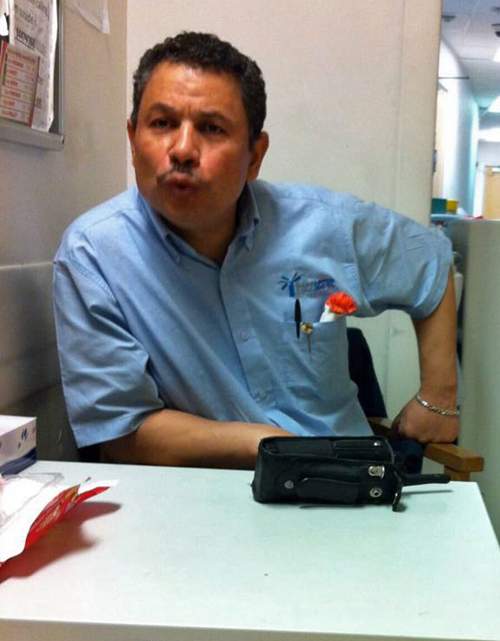
Abdulaziz at work in University College Hospital
Faouzia volunteered at the Westway Trust, teaching people to knit and crochet. She was also an involved parent at her youngest son’s school.
“His mum always came on our visits. She’d accompany the class. The children got to know her very well. She had a wonderful smile. She was a lovely lady,” says Sara Cooper, head teacher at the Oxford Gardens primary school.
Originally from the harbour town of Larache in northern Morocco, Abdulaziz moved to the UK when he was nine. His father, who was also a hospital porter, came on a visit to London and liked it so much, he stayed and got a job. Soon after, he brought his family over to live with him. His son, Abdulaziz, had two brothers and six sisters who all live in Britain.
Abdulaziz and Faouzia had three children, all born in the UK. The family moved to Grenfell shortly after the birth of their oldest son Yasin, 20 years ago.
“That flat was their home. It was like they took Morocco and it was in the flat,” says Chris Jones.
Flat 182 was full of Moroccan artefacts including carpets and ceramics gathered on the family’s trips back to north Africa.
There were Moroccan paintings on the walls and mirrors with Moroccan frames. There was even a miniature electrically operated water fountain with ceramic tiles.
“Abdulaziz loved plants,” says sister Hanan Wahabi, who lived in another part of the tower.
“He had a range of plants and he took pride in how much they would grow.
“Abdulaziz and Faouzia were both proud of their children and liked having their photos displayed showing the progression of how they had grown.”
The couple had just finished redecorating their bedroom. They changed the flooring from carpet to laminate wood and bought new cupboards and drawers from Ikea which the older two children helped to put together.
The oldest child, Yasin, was studying accountancy part-time at Greenwich University. He’d also completed a course as a referee at football tournaments, worked in Subway and helped one of his uncles on his stall in Portobello market selling Moroccan rugs.
“Yasin was a grafter. He had lots of friends. Everybody loved Yasin,” says Chris.
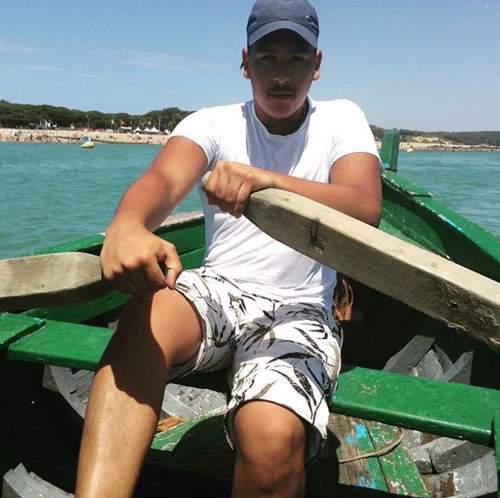
Yasin on holiday in Morocco
Nur Huda, their only daughter, was described by her teachers at Holland Park School as a “warm and good-spirited 15-year-old”. She loved playing football. Nur Huda had finished some of her GCSEs just before the fire. Her aunt, Hanan, picked up the results when they came. Nur Huda got an A in additional science and Bs in core science, history, PE, maths, English language and literature. “Her parents would have been proud of her,” says Hanan.
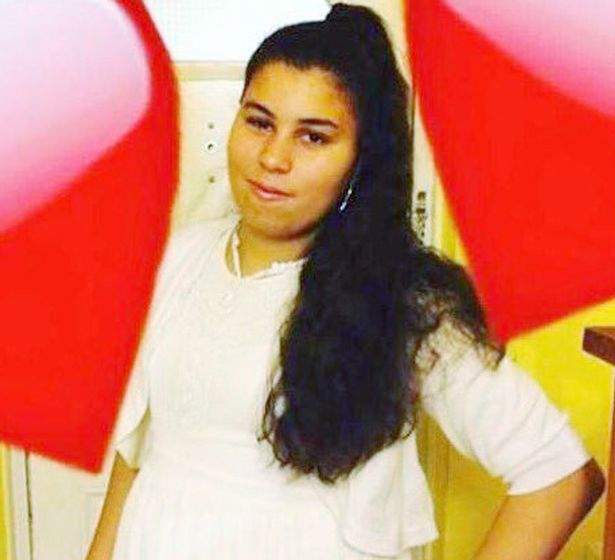
Nur Huda was taking her GCSEs in June
Eight-year-old Mehdi was in year three at Oxford Gardens Primary School. A keen judo fan, his friends made a collage to describe him. It included the words “funny”, “loving”, “warm”, “beautiful person”.
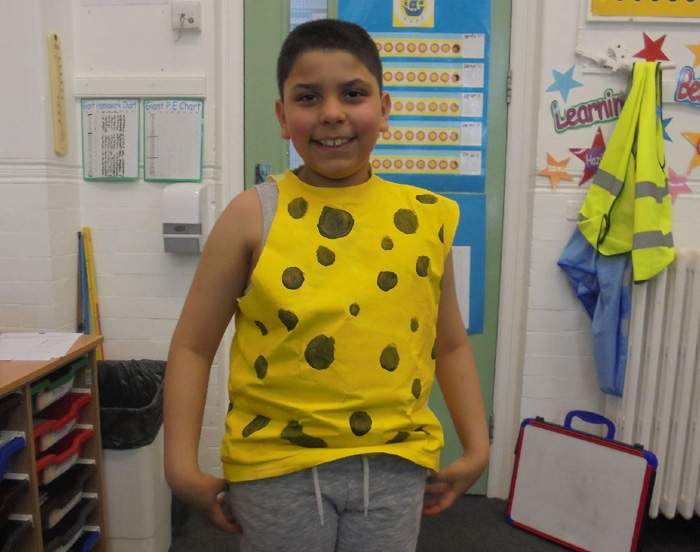
Mehdi, dressed for World Book Day
The El Wahabis, the Gomes family say, were at the heart of the 21st floor community. The children were in and out of each other’s homes and the adults often knocked on each other’s doors for a chat or to borrow something when they’d run out. Faouzia’s generosity stands out.
“I remember one Christmas, she came to knock on our door, with this huge chicken. She said, ‘This is for you, it’s Christmas,’” says Andreia Gomes.
On the night of the fire, the El Wahabis ate together as a family. It was Ramadan and Yasin went to the mosque to perform the specific prayer that follows the fast. He then went out with some cousins and friends to an American diner in west London before returning home. Abdulaziz and the rest of the family stayed and prayed in their flat. Nur Huda was revising for her GCSE exams.
Helen Gebremeskel and her daughter Lulya saw the El Wahabis at about 01:30 as they all tried to escape the building. But as they attempted to go downstairs, they were turned back by other Grenfell residents who were coming up the staircase.
“People were telling us to go back up. Because the firefighters had told them to go back up, to go to the top,” says Lulya.
Relatives of the El Wahabis spoke to them by phone that night. Abdulaziz’s sister Hanan lived with her family on the ninth floor. She escaped from the building at about 01:20 and then spoke to her brother at 01:25. He said he was going to try and get out with his family. They spoke again at about 01:30 and Abdulaziz told her they hadn’t been able to get out because it was pitch black and they were struggling to breathe outside the flat.
When Hanan called again, the family said they’d been told by the emergency services to stay put and await rescue. Another sister spoke to Faouzia El Wahabi at about 02:00. Faouzia told her that the emergency services had advised the family to move into the bedroom and put towels under the door.
Chris Jones and his wife also spoke to Abdulaziz that night.
“He said, ‘There’s a lot of smoke, we’re not leaving.’ After that, that was it. We tried ringing and ringing, but there was no answer,” says Chris. “I’ve thought a few times about being put in the position where you’ve made a decision for the family around you. The last thing you would do is what we call the Shahada [prayer]. They would have got comfort out of that.”
The surviving relatives have endured a long wait to find the remains of their loved ones. All five members of the family - Abdulaziz, Faouzia, Yasin, Nur Huda and Mehdi - have now been identified in the flat. Relatives received the news about Nur Huda only in the middle of September.
The tragedy of the family’s demise has rippled out into the community.
Head teacher Sara Cooper had to break the news to Mehdi’s class. “It was incredibly hard. There was lots of sobbing, but I think it was important because they were ready – they were at the point where they could cry, because of all the amazing work their teachers had done. We all cried together.”
A week after the fire, University College Hospital paid tribute to its missing porter. The chief executive, Marcel Levi, said: “Abdulaziz is an extremely dedicated and hugely popular member of staff. He is a larger than life character who never fails to show kindness and compassion to patients and colleagues.”
Chris Jones is still trying to deal with what has happened.
“If there was a good way to die, it would be among people who loved you and cared for you and would do anything on this earth to be with you.”
“I can’t believe we won’t see them any more,” says Andreia Gomes. “The youngest one used to come and knock on our door every Sunday to play with our youngest. She used to go there as well to have dinner with them. We used to see them every day, if not one of the children then the mum or dad. I think I’m still just expecting to bump into one of them in the road.”
In one of the one-bedroom flats lived Ligaya Moore, who came to Britain from the Philippines about 45 years ago. Her friend Nenita Bungay says Ligaya had always dreamed of living in the UK.

She came to work as a nanny and later was a waitress, and had married a British man, James Moore. He died of cancer a decade ago and Ligaya, by then retired, continued to live in their council flat. She was a keen ballroom dancer back in the day.

A photo of Ligaya's wedding
“She was an active person, she loved to dance, even at her age. That’s why she loved our church because she loved dancing,” says Pastor Emil from the Jesus is Lord Church.
Ligaya was well known to her neighbours on the 21st floor.
“She was always sweet after school, because sometimes I’d come home by myself. I’d see her in the lift and she would always offer me a sweet,” says Lulya.
“She was lovely, she always played with the kids. She was 80, something like that I think, and she used to use the stairs for exercise! It was amazing. From the 21st floor to the ground is a lot of steps,” says Marcio Gomes.
On the night of the fire, none of the surviving neighbours saw Ligaya at all.
Nenita was the last person to see her. “We had a wonderful dinner that night. She peeled avocado. We had a wonderful salad. I brought some porridge. She brought chocolate. She was so happy.”
After the meal, they went their separate ways at about 22:30. Nenita got a call that night from another friend to say Ligaya’s building was on fire.
“I call her every minute, no answer,” says Nenita.
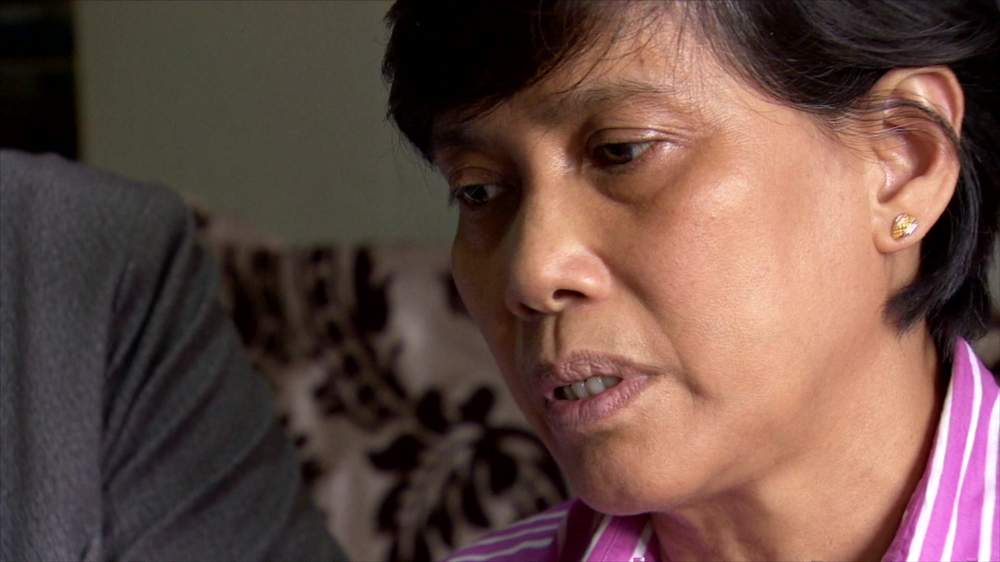
Nenita Bungay hopes her friend died peacefully in her sleep
“I am thinking she was in a deep sleep, maybe in a deep sleep and being suffocated with fire and smoke.”
The police showed Nenita footage of Ligaya’s burnt- out flat. “The ceiling, the walls, everything is rubble… everything is collapsed. The bed is only coils, the fridge is only a skeleton.”
Forensic teams have located human remains inside Ligaya’s flat. They haven’t yet been identified as hers.
Very sadly, on 14 June, rescue never came for Ligaya Moore, or the El Wahabis in flat 182.
Their neighbours will never forget them.
“We used to see them every day,” says Andreia Gomes. “I can’t believe I won’t see them any more.”
The occupant of Flat 184, who escaped the fire, chose not to take part in this report.
Apart from the permanent residents, there have been reports of a woman from the Philippines, illegally in Britain, who claimed to live on the 21st floor.
On contacting her, she said she was homeless and had spent time between two flats in Grenfell Tower - sometimes staying on the 21st floor but not on the night of the fire. She chose not to take part in this report.
